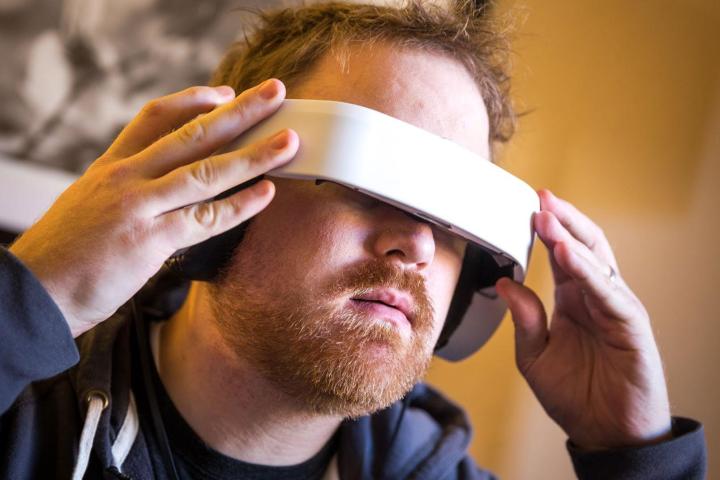
We first posted about Avegant’s pioneering new virtual retinal display technology a few months ago back in October, and despite the fact that it was merely a nameless prototype back then, the company is moving at a breakneck pace to get production started. Early yesterday morning, the Avegant launched a crowdfunding campaign on Kickstarter to raise the necessary funds, and within four hours of going live, the project had already blasted past it’s goal of $250,000.
For those who might be unfamiliar with the tech, here’s a quick overview. Glyph is a head-mounted virtual display similar to Oculus Rift and its predecessors in some ways, but drastically different in a few key areas.
First and foremost, the way in which it produces images is completely different from any VR headset we’ve seen yet. Rather than relying on a set of high-resolution LCD displays placed close to your eyes, Avegant’s technology cuts out the middleman and instead uses what it calls a “virtual retinal display” to beam images directly onto your retinas. Delivering images directly into your eyeballs like this not only eliminates the dreaded “screen door effect” that happens when you place a screen close to your face, it also dramatically reduces eye strain. Check out this video to see how it works
What’s more, the device incorporates a pair of premium headphones into the headset – it’s meant to be used for all kinds of different entertainment, not just video games. Avegant designed Glyph to plug into practically anything with a display, which means you can use it for everything from gaming, to watching movies, to simply playing some tunes. It’s basically a high-end home theater for your face.
Obviously, a device like this has some serious mass appeal, so it comes as no surprise that in less than 48 hours after the campaign went live, over 970 people have backed the project, and a substantial chunk of that group is comprised of backers who pledged $500 bucks or more to “pre-order” the headset. At time of writing, Avegant is sitting pretty at over $470K in pledges – just a few thousand short of doubling its original goal.



